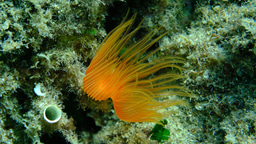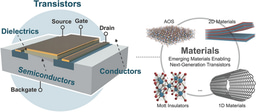It was only a few months before Nature Methods was launched in October 2004 that Jan Huisken and Ernst Stelzer had published a paper in Science in which they used light sheet microscopy – what they called selective plane illumination microscopy or SPIM – to image fluorescence within transgenic embryos. Simplistically put, this century-old technique achieves optical sectioning by illuminating a sample through its width with a thin sheet of light. In the last decade, Nature Methods has published a steady stream of papers reporting developments in light-sheet imaging. Here are the highlights.
Our very first light-sheet paper was also from the Stelzer group, reporting the use of deconvolution to improve resolution of the technique (Verveer et al, 2007). This was rapidly followed by a paper from Hans-Ulrich Dodt, in which samples such as entire insects or brain tissue were rendered transparent with clearing agents to produce spectacular light-sheet ‘ultramicrographs’ (Dodt et al, 2007). The push to higher resolution continued, with a paper from Albert Diaspro reporting 3D super-resolution imaging within thick samples using light-sheets (Cella Zanacchi et al, 2011). The Stelzer group, meanwhile, improved performance of the technique in larger samples that scatter more light, by combining it with structured illumination (Keller et al, 2010).
Thai Truong, Willy Supatto and Scott Fraser added two photon excitation to light-sheet imaging, thereby doubling the depth and increasing by an order of magnitude the speed at which they could image samples such as developing embryos with each approach alone (Truong et al, 2011); Supatto recently extended this to imaging in multiple colours (Mahou et al, 2014). And then in 2012, the groups of Phillip Keller and Lars Hufnagel independently reported microscopes that could take take multiple views of a biological sample simultaneously, allowing rapid imaging of entire developing fly embryos at sub-cellular resolution (Tomer et al, 2012; Krzic et al, 2012).
Though light-sheet imaging is perhaps at its most powerful in the imaging of thick samples like embryos or tissue sections, it has been used for substantial performance improvements in cellular imaging as well. In 2011, Eric Betzig’s group used scanned Bessel beams to create thinner light sheets and thus much improved axial resolution, achieving isotropic 3D resolution and rapid imaging within living cells (Planchon et al, 2011). Note also that, as Tom Vettenburg, Kishan Dholakia and colleagues showed, generating the light sheet using an Airy beam, rather than Gaussian or Bessel beam, yields an even larger field of view without sacrificing contrast and resolution (Vettenburg et al, 2014). Variations on the light-sheet theme have also been developed by the labs of Makio Tokunaga and Sunney Xie for single-molecule imaging within cells (Tokunaga et al, 2008; Gebhardt et al, 2013).
In recent years, the excitement around this technology has been palpable, with several papers reporting impressive applications of light-sheet microscopy: it has been used to functionally image the entire fish brain (Ahrens et al, 2013) and the brain of ‘fictively behaving’ fish (Vladimirov et al, 2014), as well as to image the beating fish heart (Mickoleit et al, 2014).
Perhaps not surprisingly, the emphasis in methods development has also been shifting a little. On the one hand, platforms are being developed to make this valuable technique available more widely, for instance via the OpenSPIM or OpenSpinMicroscopy platforms (Pitrone et al, 2013; Gualda et al, 2013). At the same time, analytical tools are necessarily being developed to handle the vast reams of data that a light-sheet experiment generates. The group of Pavel Tomancak reported Bayesian-based deconvolution methods to analyse the large data sets that result from multiview imaging (Preibisch et al, 2014). Phillip Keller and colleagues described computational methods to segment and track nuclei in data sets from light sheet or other imaging, for fast lineaging of developing embryos (Amat et al, 2014). Misha Ahrens and colleagues reported Thunder, a suite of analytical tools built on a platform for distributed computing, enabling the mapping of brain activity in ‘fictively behaving’ zebrafish (Freeman et al, 2014).
It’s fair to say that this venerable method has been thoroughly revived over the past decade. Light-sheet imaging is poised to yield tremendous biological insight. We hope to keep you updated on future developments in Methagora.


![Highlights of the BMC Series - [October] [2025]](https://images.zapnito.com/cdn-cgi/image/metadata=copyright,format=auto,quality=95,width=256,height=256,fit=scale-down/https://images.zapnito.com/users/840921/posters/759a1fb0-b10f-491e-bdff-940b3c1a87de_medium.png)


Please sign in or register for FREE
If you are a registered user on Research Communities by Springer Nature, please sign in